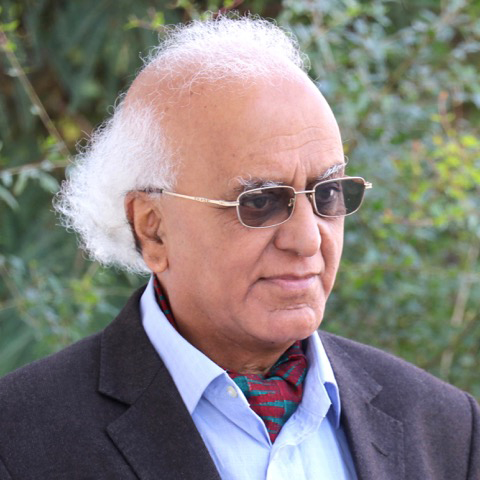Columns
The myth and methods of teaching English in Nepal
Whether syllabuses have worked or failed have always been decided by the learners of the language.
Abhi Subedi
How much of English teaching in Nepal is a myth and how much is reality? These are the major questions that teachers of the language, at all levels of education, are facing today. We will face this more strongly in the days to come. But one reality about English teaching is that it will grow, especially in terms of the need for this language in a world lashed by the storm of Covid-19. I discussed some aspects of English teaching and challenges at three virtual seminars in the third week of May 2020, at the invitation of the regional bodies, of the Sudurpaschim and Karnali provinces and Province 5, of Nepal English Language Teachers Association (NELTA) and the president of its central body Motikala Subba Dewan. Attended by a remarkable cohort of English teachers, from professors to the new entrants, these virtual seminars discussed very important issues—from methods and modes to the problems of English teaching in Nepal.
A certain imaginaire of power and rule dominated pedagogy as well as the language itself in this country. A white spectre called setokhyak in the neo-Baroque buildings of the Ranas, therefore, goes into the making of the myth of English in this country. The story goes like this: Ironically, the first oligarchic ruler Junga Bahadur Rana (1817-1877) had started the formal teaching of English in Nepal. He did so by bringing two Englishmen in 1853 to teach Rana children inside his palace in Thapathali. Learning English was beyond the reach or imagination of the common people. But following the advice of pundits and bhardars, the school was opened to the children of higher officials in 1867. After some years, the selfsame school was shifted near Ranipokhari, while retaining a name to remind of its ties to a palace. The famous Durbar High School became a historic entity in education.
I want to briefly dwell on the themes that I spoke about in these NELTA seminars. At the virtual seminar of Province 5 on May 13, I spoke about the changing techniques that have developed, especially in the time of a pandemic. People in this country love English. I can say that on the strength of my experience of teaching this language for nearly half a century and my readings and supervising students' doctoral research work. English teachers and their teaching receive great cooperation from society. Society and its values do not militate against the learning of English. However, what has always struck me, and perhaps all of us, is that English teaching is not a neutral subject. The teaching of English in both easy and difficult times can be seen as exacerbating inequality, which was the genesis of English learning in Nepal.
For Nepali learners, the use of English is related to mobility. They use the language for various domains of communication, direct or virtual. In these times the mobility of English language users shifted to social media and virtual modes of communication. But talking about the teaching of English, a few problems demand answers. They are, as we have discussed already, the accessibility to the internet; consequently, how the disruptions caused by pandemics affect teaching. This calls for discussions about the class system in pedagogy, in particular, and society, in general. One thing is certain, English is losing its hallowed position and entering a period of testing on whether it can prove its validity as a subject of education, communication, and personal relations. But teachers of English as a compulsory subject should work towards making it an effective, helpful medium of education, hope and humanism.
The topic of Sudurpaschim’s virtual seminar was about the teaching of literature in the ELT (English Language Teaching) classes. I examined the efficacy of teaching literature written in English. Literature as a subject evokes earlier methods and pedagogic process. The most familiar postcolonial perspective was represented by English literature. All our syllabuses and textbooks were framed in that manner. Shakespeare was the dominant force. But English literature and English language syllabuses were separated. The rupture began in 1968-69 when Alan Davies, a British professor of Edinburgh University, came to chair the Central Department of English under an agreement with the British Council. He divided the English syllabus into general English and literature streams. Those who aspired to study for an MA in English did choose the former to qualify. Separating literature from what is called a language-oriented course was thus a recent experiment seen not only in Nepal but also in Britain. I studied the poetry of American poet e e cummings (as he is attributed) as a deviational use of language in Edinburgh University in 1978. But a genre called stylistics developed that brought language and literature together. All syllabuses are using this compromise even today.
Literature remained an issue all along. Theoretically, the imbrication of language and literature remained after that. It continues to be so in the whole of the South Asian English teaching schemata. But the later development was that literature became flexible, wider and relevant—especially when non-whites or non-native speakers joined and produced great fictional works, plays and poems. Literature became relevant. The medium became digitised. Digital humanities became a method of expanding the horizon of literature studies. In a situation such as this, we can make the teaching of literature through virtual classes inspiring and engaging.
In the virtual seminar on May 21, organised by the Karnali branch of NELTA, the theme of my presentation was transforming English as a second language in the context of Nepal. I spoke about the ‘glocal’ (global + local) context of English teaching. We should remember that, in all probability, none of us teaching English in Nepal are native speakers. Nor are the learners. So the relevance of a syllabus should be judged by how much of the language that we teach or learn can be useful in the Nepali context. The volume of foreign visitors will be smaller, the domains of the direct use of English will shrink.
In such a context, we should make the syllabus more flexible and learner-based. The great shapers of syllabuses of English have always been the learners, which we understand by assessing how many of our syllabuses worked or failed. But the learner factor has been very important; our focus should be the same. Our task is not debunking the myth of English but using it productively.
***
What do you think?
Dear reader, we’d like to hear from you. We regularly publish letters to the editor on contemporary issues or direct responses to something the Post has recently published. Please send your letters to [email protected] with "Letter to the Editor" in the subject line. Please include your name, location, and a contact address so one of our editors can reach out to you.




 14.12°C Kathmandu
14.12°C Kathmandu













%20(1).jpg&w=300&height=200)

